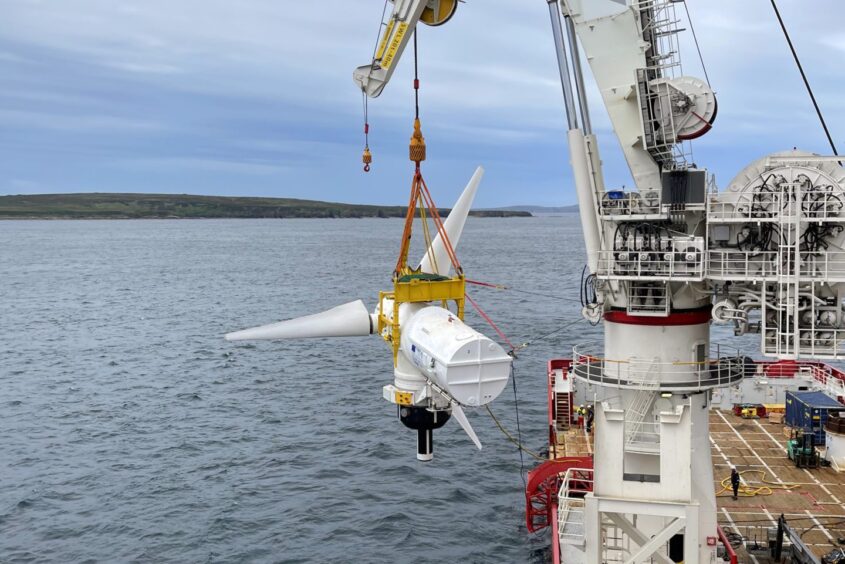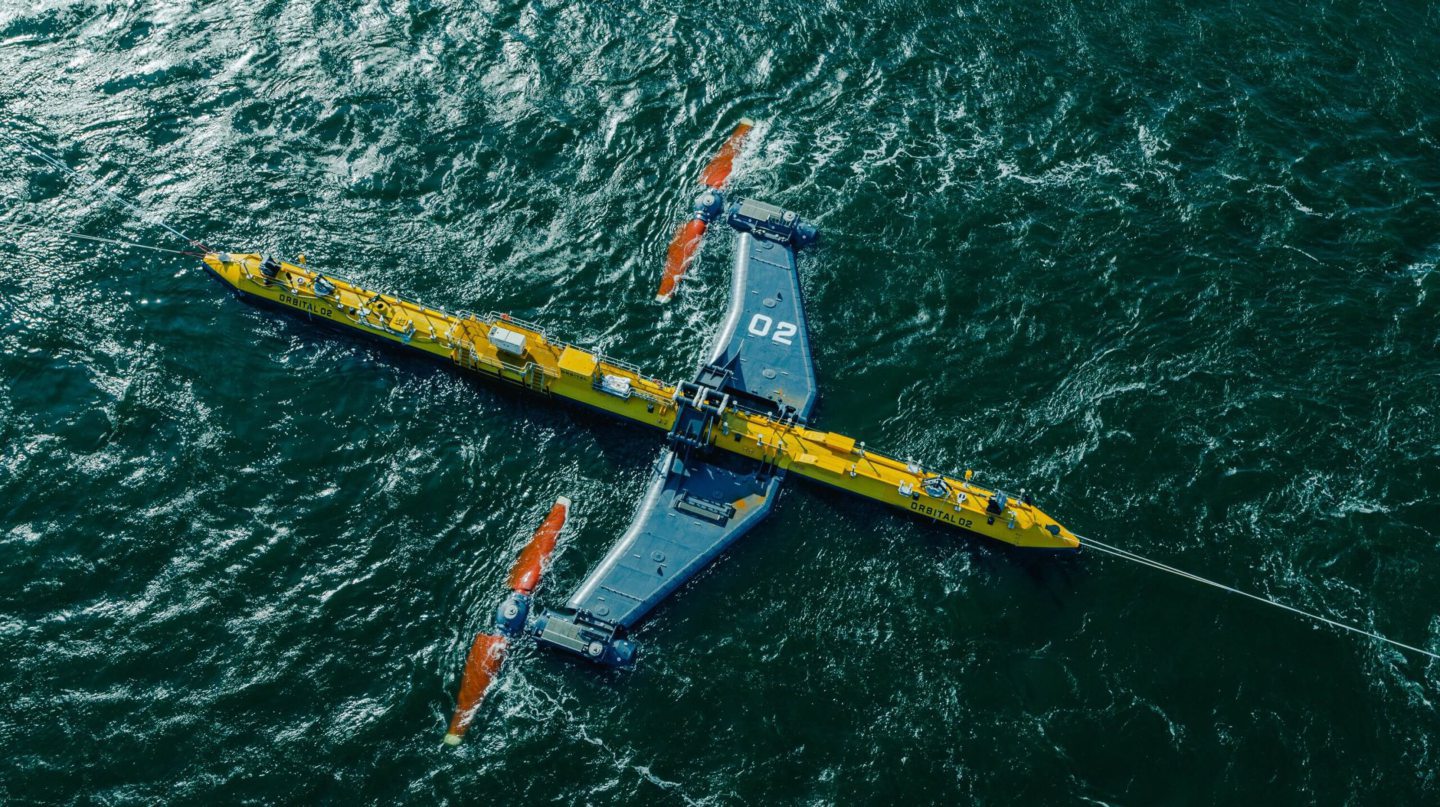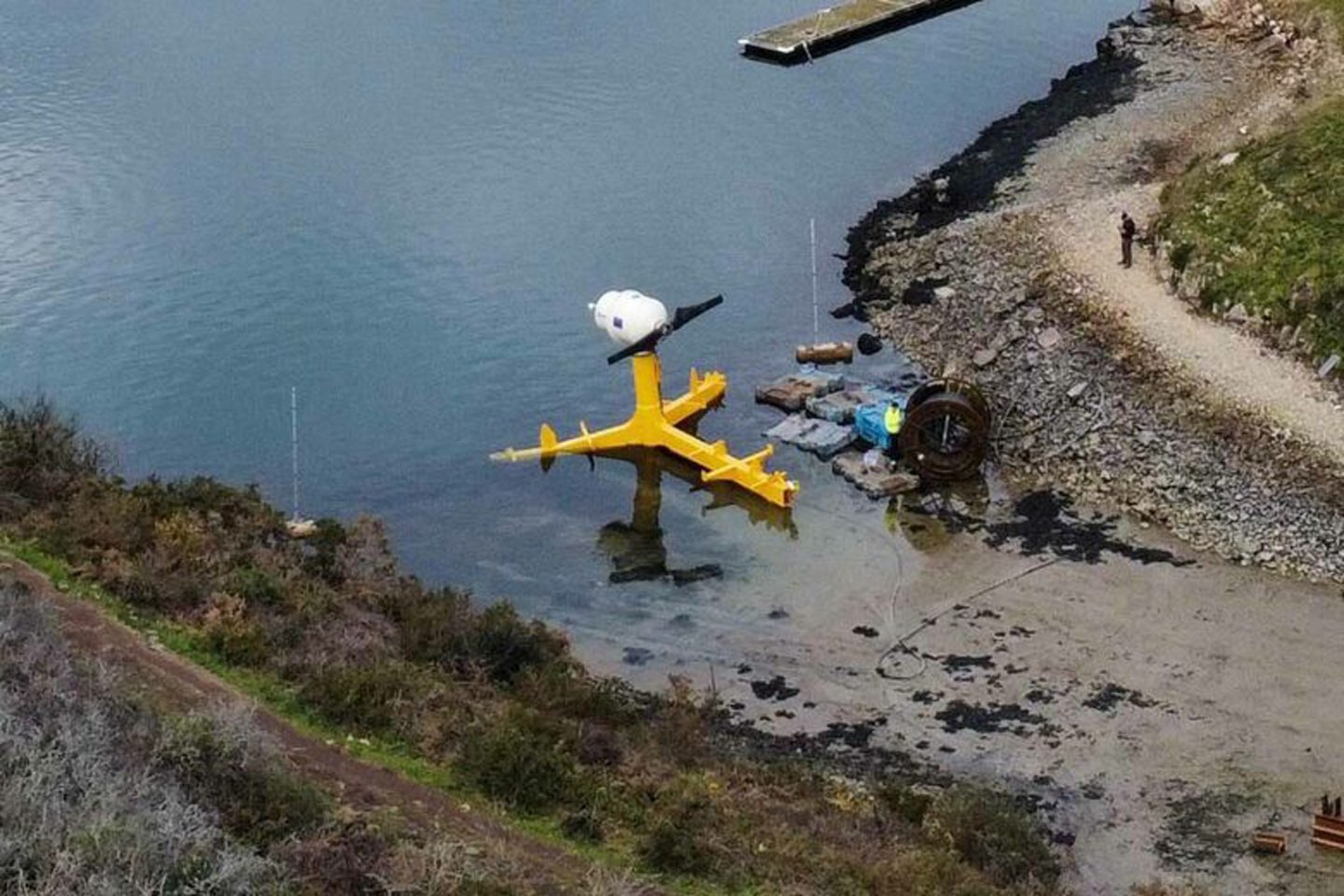
The UK wave and tidal sector is pushing for more strategic support from the government as it turns its attention to this year’s sixth Allocation Round (AR6).
While much attention will be on potential bids from the offshore wind sector following a disastrous AR5, wave and tidal projects are growing in prominence in the government’s Contracts for Difference (CfD) scheme.
Tidal stream projects received £20 million in ringfenced funding for AR4 in 2021, and a further £10 million in AR5 in 2023.
While the government has yet to confirm the budget and level of ringfenced funding for the tidal sector in AR6, it will increase the price offered for tidal projects by 29%.
Speaking to Energy Voice, UK Marine Energy Council chair Sue Barr said after the removal of the ring fence for wave and tidal in the early AR rounds the sector took a “key interest” in seeing revenue mechanisms developed.
“Most of the leading technology developers are based in the UK, so a route to market through the CfD mechanism has been incredibly important for the sector,” Ms Barr said.
“We’ve now got over 100MW of potential contracted CfD’s for wave and tidal technologies, predominantly tidal, with 53MW of tidal stream capacity secured in AR5.”
Tidal sector ‘back on track’
Ms Barr said tidal energy technology has “really moved forward at pace” since securing CfD awards and the sector is “back on track” to have significant deployed capacity by 2028.
The tidal sector also recently surpassed 60GWh of renewable energy provided to the UK grid, predominantly through the MeyGen project in the Pentland Firth.
The success of projects in Shetland and Orkney had helped “prove the technology” and shown it is capable of producing energy at scale, Ms Barr said.
“So overall we think the CfD has been incredibly important in bringing forward those projects and increasing capacity,” she said.
“We know we’ve got about 128 megawatts of eligible capacity in the UK that could apply into CfDs, so continuity of that support is what we’re asking for at the moment to ensure that we could potentially provide one third of the UK’s electricity demand.”
UK tidal stream resources could potentially generate more than 11GW of electricity, and Ms Barr said the sector believes it should play “a really significant role in the decarbonisation piece and the move to net zero”.
While the wave energy sector is at an earlier stage of development, the early success of Mocean Energy and assets like the European Marine Energy Centre in Orkney show the potential for Scotland and the UK to build on the success of tidal stream.
UK highly specialised in tidal stream energy
A recent study by the University of Edinburgh found marine energy can deliver up to £41 billion in benefits to the UK economy by 2050 if 6GW of both wave and tidal is deployed.
Another report by the London School of Economics Grantham Institute found the UK is more specialised in tidal stream energy than other clean energy technologies including offshore wind, nuclear and carbon capture.
The report found the UK could capture export opportunities from high-value products including tidal turbines, however, “the UK’s ability to secure such opportunities will depend on timely investments in the domestic supply chain”.
With UK developers like Scotland’s Mocean Energy also pioneering wave energy technology, Ms Barr said it was crucial to ensure a pipeline of projects to encourage investment.
The UKMEC is pushing for the government to include a 1GW target for tidal stream projects and a 300MW target for wave by the mid 2030s.
The sector is also pushing for a £30 million ring fence for tidal stream in AR6, as well as introduction of a ring fence for wave energy in AR6 and AR7, Ms Barr said.
Global push for wave and tidal projects
Alongside these targets, UKMEC is seeking increased government for research and development to compete with wave and tidal funding from Europe, Japan and the United States.
“There is a strong push now for projects globally,” Ms Barr said.
“We know that support through these sort of R&D phases in other jurisdictions is still incredibly strong and we need the same from the UK government.
“If we want to develop the opportunities that we have here, we need a combined approach to both revenue mechanisms and public monies to bring through the technologies, bring through the projects and look at delivery.
“The UK has led to date, we are global leaders, we’ve deployed more marine technology in wave and tidal than anywhere else in the world.
“However, there is significant competition in the market globally for this and I think it’s going to be critically important if the UK wants to retain the lead and the potential for export… we really need to see a combined target or strategic approach to delivery of marine energy.”
Echoing the call for the Scottish and UK governments to take a more direct and strategic approach to marine energy is Nova Innovation CEO Simon Forrest.
Tidal export potential
Speaking to Energy Voice, Mr Forrest said while the CfD rounds are important for the marine energy sector and that Nova is likely to place a bid for AR6, the company has ambitions to be more than just a UK power supplier.
Alongside developing tidal stream projects in France and Canada, the company is also developing floating solar technology at its Leith headquarters.
Mr Forrest said Nova had ambitions to establish itself as the ‘Vestas equivalent’ of the tidal sector, exporting turbines globally and creating more advanced manufacturing jobs in Scotland.
Nova delivered its Shetland Tidal Array project with more than 80% Scottish supply chain content, showing the potential for tidal energy to become synonymous with Scotland.
Underscoring the future export possibilities, Nova recently completed a pilot study in Indonesia, the world’s largest island nation, and Mr Forrest said the country had “huge potential” for tidal projects.
But he said unless the UK developed an industrial strategy for the marine energy sector, it risked repeating the same mistakes seen in floating offshore wind.
Turbines from the world’s first floating offshore wind project off the coast of Peterhead were recently towed back to Norway for maintenance, a situation Mr Forrest described as “shameful”.
Canada ‘pioneering’ on tidal
He said the UK should look to the approach of Canada as an example of what the tidal sector needed.
“In the UK, it can take up to seven years for a project to go through the approval process,” he said.
“In Canada, we did it in two.”
The Canadians had displayed a “pioneering culture” and an eagerness to get things done, receiving funding and proactive support for its projects in Nova Scotia as Canada looks to exploit its significant tidal stream resources.
With recent EU-led projects demonstrating a 40% in tidal stream energy costs and ORE Catapult forecasting the technology could become cheaper than nuclear, Mr Forrest said the sector warranted greater attention and support.
Marine energy hopes for general election boost
With a general election on the horizon, Ms Barr said the marine energy sector is engaging with all parties to highlight its economic potential.
“Our supply chain is not clustered in areas, it tends to be spread across the whole of the UK from central Rugby up to the north coast of Scotland down into the Isle of Wight,” she said.
“So we really need a strategic oversight to look at developing the supply chain and then its export potential, because we know that wave and tidal has very strong UK content and can produce really high levels of economic return, up to a 10 times return on investment on infrastructure.
“But we are at risk of losing that if we don’t get the long term continuity in the market. We need to make sure that is retained.”
With Labour leader Sir Keir Starmer launching the party’s green energy strategy at Nova Innovation’s headquarters last year, the sector will be hoping for more positive signs as it seeks to keep moving full stream ahead.

 © Supplied by UK Marine Energy Council
© Supplied by UK Marine Energy Council © Supplied by Orbital Marine Power
© Supplied by Orbital Marine Power © Supplied by Nova Innovation
© Supplied by Nova Innovation © Supplied by Nova Innovation
© Supplied by Nova Innovation © Supplied by Nova Innovation
© Supplied by Nova Innovation